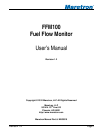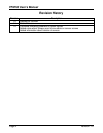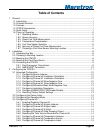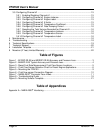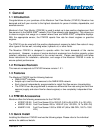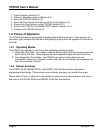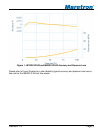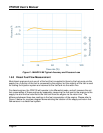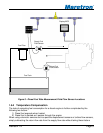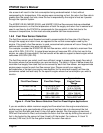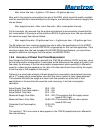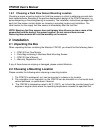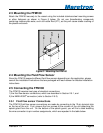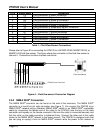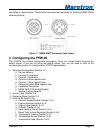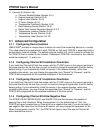
FFM100 User’s Manual
Page 2 Revision 1.2
1. Unpack the Box (Section 2.1)
2. Choose a Mounting Location (Section 2.2)
3. Mount the FFM100 (Section 2.3)
4. Mount the Flow Sensors and Connect Fluid Lines (Section 2.4)
5. Connect the Flow Sensors to the FFM100 (Section 2.5.1)
6. Connect the FFM100 to the NMEA 2000
®
network (Section 2.5.1)
7. Configure the FFM100 (Section 3)
1.6 Theory of Operation
The FFM100 operates by using positive displacement fluid flow sensors. These sensors are
volumetric (they measure the volume of fluid passing through them as opposed to the mass of
the fluid).
1.6.1 Operating Modes
The FFM100 can operate in one of two user-selectable operating modes:
1) Differential Flow Rate – this mode is used for diesel engines that recirculate unused fuel
back into the fuel tank. These engines will have separate supply and return fuel lines.
2) Two Independent Flow Rates – the FFM100 can measure flow rates from two
independent sources; for example, a water flow rate on one channel and a gasoline fuel
flow rate on another channel.
1.6.2 Sensor Accuracy
The M1RSP-2R-E8, M2RSP-2R-E8, and M4ARP-2-E8 fuel flow sensors use positive
displacement technology. These sensors are extremely accuracy over a wide flow range.
Please refer to Figure 1 below for a chart detailing typical accuracy and pressure loss versus
flow rate for the M1RSP-2R-E8 and M2RSP-2R-E8 fuel flow sensors.



